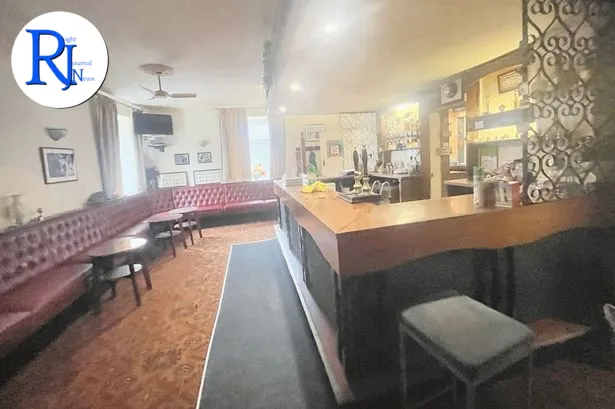A former pub in the Welsh Valleys has been put up for sale for £1, drawing sharp interest from local buyers and property watchers. The Nantymoel Hotel, a sizeable building with large bar areas, six bedrooms, a kitchen and a cellar, appears as a striking bargain on the open market. The price signals a potential opportunity for a buyer willing to take on a complex project and any associated costs. Listings at this level are uncommon and often attract people looking for a restoration challenge or a community venture.
The property features substantial floor space and multiple rooms that could lend themselves to different uses, subject to planning and permissions. The listing highlights both the scale of the site and the low headline price, which suggests the seller aims to spark rapid attention. WalesOnline reported the listing on Wednesday, 15 October 2025.
Context and timing
The Nantymoel Hotel came to wider public attention after coverage on Wednesday, 15 October 2025. The building sits in the Welsh Valleys and carries the name of the local area. The property’s makeup includes large pub areas, a kitchen, a cellar and six bedrooms. That mix speaks to its past as a public house and potential future options for a buyer who understands the requirements and costs that come with older commercial buildings.

Image Source: Wales Online
A £1 price tag that invites questions
A guide price of £1 stands out in any market. Sellers sometimes use a very low price to broaden interest quickly and encourage offers, especially when a building requires work or when the owner seeks a clean exit. The price can also act as a signal that the buyer will need to cover legal fees, surveys, and any refurbishment in full. Buyers should not assume the total cost will be tiny because the listing shows a nominal sum.
A headline price this low also draws attention from beyond the local area. Prospective buyers often include developers, small business owners, and community groups. The right buyer will look beyond the headline and carry out thorough checks on the building, its title, and its planning position. A transparent marketing process benefits both seller and community, since it helps set realistic expectations about timeframes, budgets and outcomes.
Inside the Nantymoel Hotel: space and potential
What makes the Nantymoel Hotel noteworthy is its size. The building includes large pub areas that could support public-facing uses, alongside a kitchen and a cellar. The six bedrooms provide extra space for staff, guests or future conversion, depending on permission. The structure gives an owner flexibility to think about various layouts and purposes.
Any buyer will need to decide whether to run a hospitality business or pivot to a different legal use. A return to pub trade would involve licensing and compliance with food hygiene and safety standards. Changing to guest accommodation, offices, community space or homes would likely require planning consent. Early talks with the local planning authority help clarify what is possible and what conditions might apply.
Why former pubs keep appearing on the market
Former pubs reach the market for many reasons. Shifts in consumer habits, more at-home socialising, and rising operating costs have made some licensed venues hard to run. Buildings that once served as busy hubs now need fresh investment, different business models, or a new purpose. The Nantymoel Hotel reflects that wider pattern: a sizeable premises looking for a future that fits present-day demand.
These buildings often sit at the centre of their communities. When they fall vacant, the effect can be visible on a high street or village centre. A successful sale and refurbishment can encourage other upgrades nearby. At the same time, delays or stalled projects can weigh on local confidence. A clear plan, realistic budgeting and open communication with neighbours can help turn a difficult site into an asset again.
Due diligence: what buyers should check before offering
A £1 listing does not remove the need for careful checks. Sensible buyers will:
- Commission a building survey to assess structure, roof, damp, and services.
- Review the title for covenants, rights of way and boundary issues.
- Check planning history and seek pre-application advice on any change of use.
- Confirm business rates or council tax implications.
- Assess utilities, including electricity, gas, water, and drainage connections.
- Consider insurance and security for a large vacant building.
- Estimate costs for compliance, such as fire safety, accessibility, and licensing if trading.
Many former pubs need works to meet modern standards. Kitchens, cellars and large bar areas can hide complex mechanical and electrical systems. Even if the purchase price is nominal, the refurbishment budget can be significant. A staged plan, with realistic contingencies, helps avoid surprises once work begins.
Community uses and local impact
Large buildings in village centres often suit community-led ideas. People sometimes explore mixed-use models that include meeting rooms, hot-desking, arts or sports events, or training spaces. The six bedrooms at the Nantymoel Hotel may allow for short-stay accommodation in support of such activity, if permitted. A social enterprise model can blend local services with sustainable income streams.
For residents, the key questions often focus on noise, parking, and the look of the building. A new owner who shares plans early and listens to feedback tends to win support. If the site returns to active use, it can help lift footfall and provide a focal point again. If a buyer intends a non-commercial use, clear timelines and site management become vital, so the property does not sit idle for long.
Navigating planning and licensing
If a buyer wants to reopen as a licensed venue, they will need to address premises licensing, personal licences and conditions tied to noise, hours and safety. If the plan involves a shift to accommodation or residential units, planning consent and building regulations apply. Early engagement with planners helps confirm whether the building’s scale, access, and parking can support the proposed use.
Historic context can also matter. Some valley pubs have heritage features or sit within conservation areas. In those cases, design choices and materials face closer scrutiny. Even when the building has no special status, sympathetic work helps preserve local character and may ease the path through planning and community consultation.
A realistic path from listing to reopening
Turning a former pub into a viable project takes time. A buyer should map out a clear sequence: legal completion, site security, surveys, planning engagement, funding, and build phases. Public updates can help maintain interest and reduce rumours. Careful staging also allows the owner to test demand, such as running small events or pop-ups while pursuing longer-term works, subject to approvals.
Finance matters as much as design. Lenders often scrutinise old commercial buildings, and insurers will ask about occupancy and risk management. Grants may be available for energy upgrades or community projects, but they require bids and evidence. A steady approach that aligns scope with funding can prevent mid-project pauses.
Wrap-up
The £1 listing for the Nantymoel Hotel stands out, not only for its price but for the space and options it presents. The building’s large pub areas, kitchen, cellar and six bedrooms create room for a range of ideas, from hospitality to community-led activity, subject to consent. The offer invites a buyer who understands that the real cost lies in the work, not the headline price, and who values the role such a property can play in a village setting.
All eyes now turn to who steps forward and what plan they bring. With sound due diligence, open talks with planners and neighbours, and a realistic budget, the site could find a new purpose. If the right buyer acts, the Nantymoel Hotel can move from a £1 headline to a project that adds life back to its corner of the Welsh Valleys.

